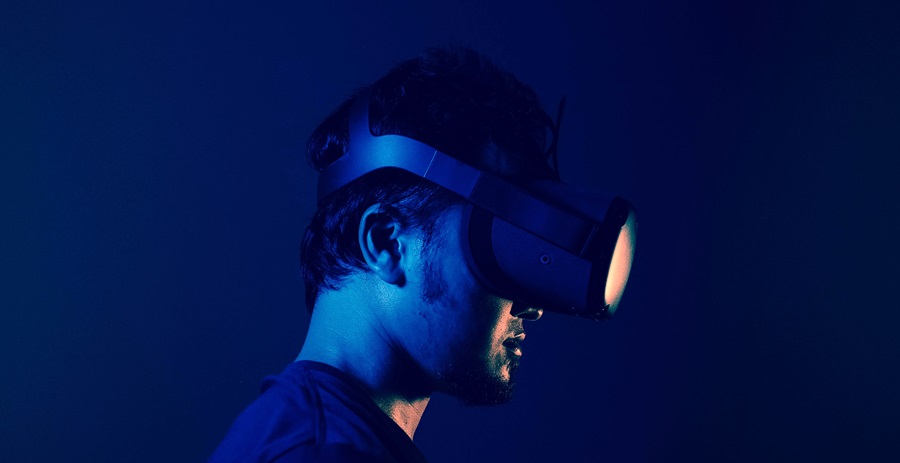Metaverse and web3 chatter have cooled somewhat, with the collapse of FTX and Meta’s renewed focus on its core social media products. But CMO interest remains strong – a mere 10% of CMOs believe the metaverse is irrelevant to their industry. Many brands with metaverse initiatives underway may be wondering the best way forward.
A long-term view is important here – smart brands will see today’s lull in the hype cycle as an opportunity to refocus on long-term value creation. By 2026, an estimated 25% of consumers will spend at least an hour in the metaverse daily for work, shopping, education, and social life – and brands that continue to build the metaverse will capture their attention.
Kantar took a 2027 lens in a recent piece of research sponsored by 20 leading organizations, forecasting several possible scenarios for the future of the metaverse.
Across all scenarios, brands looking to leverage the metaverse in their marketing should focus on cultivating community instead of obsessing over immediate ROI, leverage major events to build buzz for metaverse initiatives, and consider whether their brand can gain from playing at the leading edge of culture.
Cultivate community, and worry about ROI later
The metaverse is a new, 3D version of the internet. The first iteration of the internet, and even early social media platforms, grew slowly without clear commercial goals. For example, Facebook originally lacked advertising, which helped it achieve early success among college students long before the company developed a business model.
With the metaverse, in contrast, brands are already very active, even before most consumers have arrived. Historically, community comes first, and business models come later, so brands should not expect an immediate financial return on metaverse investments. Instead, they should focus on cultivating a community around their metaverse efforts that they will later be able to determine the best way to monetize.
This is the direction Molson Coors took for last year’s Super Bowl. Barred from advertising directly against the Super Bowl due to Anheuser Busch’s exclusivity deal, the company partnered with browser-based metaverse project Decentraland to create a virtual bar where users could gather as avatars, drink virtual beverages, and watch a virtual Miller Lite ad. The ad agency DDB, which worked on the project, said users spent as long as 20 minutes in the virtual environment.
To reap the commercial benefits of the metaverse, brands will need to give consumers a reason to spend time there. Fostering virtual spaces where consumers interact, which is what Molson Coors tested last year, is the first step. Commercial opportunities will follow.
Leverage major events to spread the word
As linear TV declines overall, moments like the Super Bowl and the Oscars are even more important for brands that want to reach mass audiences. This makes them opportunities to spread awareness of the metaverse beyond the niche population of gaming enthusiasts that use it today. Don’t assume viewers already know what it is or can do — show them.
For example, in Meta’s Quest 2 VR headset ads, a teenage boy says, “I want to be quarterback of the Dallas Cowboys.” The ad then shows the boy wearing the headset while dropping back on a football field as linemen grunt and push their way toward him.
Even if the viewer of the ad had no previous awareness of Quest 2 or even VR headsets in general, the ad would help them understand that headsets can now immerse users into a virtual setting where they don’t feel like they’re controlling a quarterback on the screen; they feel like they are the quarterback.
Meta gets extra points for the contextual targeting of its ad. By running a spot that features a football game against football games, the company is spotlighting an intuitive use case for the metaverse.
Consider your brand’s tolerance for risk
Brands that have an affinity for all things cutting edge and culturally extreme are natural fits for the metaverse. It’s no wonder that luxury fashion designers, youth-oriented CPG brands, and spirits companies have had an outsize presence thus far — all these brands thrive by association with the avant-garde.
More traditional brands have a higher bar to clear. They need to be relatively tolerant of risk, and they need to use the metaverse to solve real customer problems, not just to generate PR buzz. This is a much harder challenge, but brands that get it right can expect to reap outsize rewards.
A prime example of more risk-averse, customer-centric metaverse experimentation is enabling customers to try out products virtually. For example, transforming the well-known experience where consumers go to Ikea to try out furniture into a virtual one is a chance to capitalize on the experiential inclination of the metaverse to satisfy a basic customer need. The same use case applies to retail.
On the other end of the spectrum, expect companies with greater risk tolerance to lean into more immersive, unbounded, social experiences that, like 2D social media platforms, have a high potential for deep engagement but also come with the complications of world building.
The metaverse has not yet shown a clear business model, and brands that get in early will inevitably search longer for a commercial north star. But this is the norm, not the exception, for early-stage technologies. If the metaverse resonates with consumers at scale, brands that invest now can be in on the ground floor of the 3D internet’s answer to, well, Facebook.



